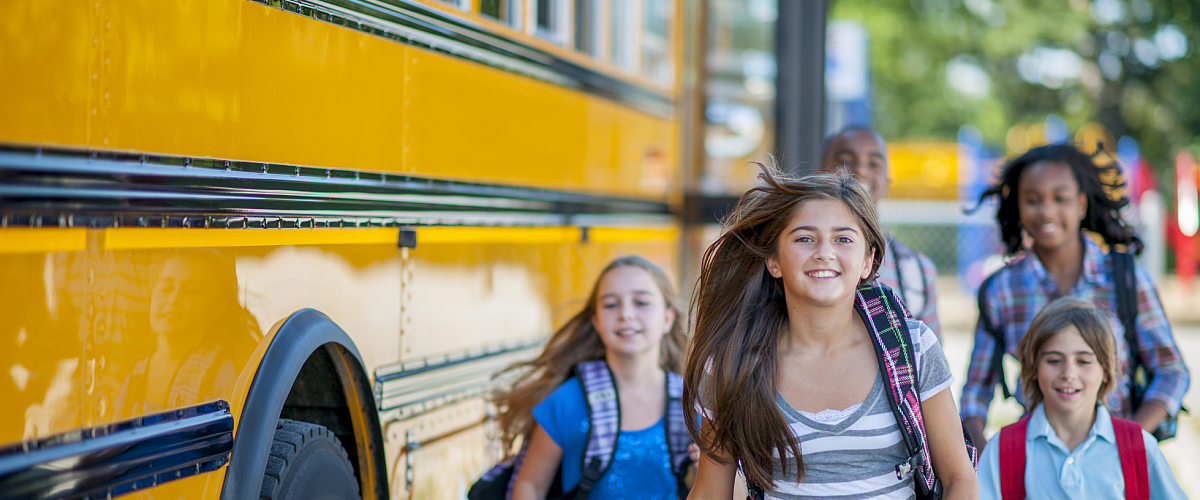Cooler temperatures, backpacks and books sprawled out on the floor—school time is in full swing. From math quizzes to the science lab to long reading lists, this time of year can be demanding. And no matter their age, what kids eat has a big impact on how well they do in the classroom and beyond.

“Healthy children are, quite simply, better prepared for school,” says Aramark Registered Dietitian Nutritionist Colleen Tweedy (photo). “We know from research that students who get high grades are more likely to eat breakfast daily, consume veggies and fruit one to two times per day, and drink at least one glass of milk per day, on a regular basis.”
Last time we touched base with Colleen, she shared lifestyle tips that can help children reach their full potential in school such as helping in the kitchen and staying active. Now we’d like to cover another aspect of classroom success: What should you feed these growing minds and bodies? There’s a lot of material to cover, so to keep it simple we asked Colleen to name four foods that help students thrive. Then we threw in some recipes and tips to make things fun for your child.
Consider this your back-to-school nutrition cheat sheet!
LEAFY GREENS
Kale, spinach, collards, broccoli … these veggies top many a superfoods list, and for good reason.
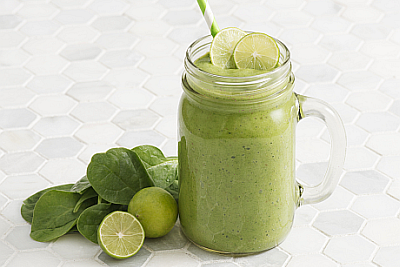
The 101: Leafy greens are rich in fiber to keep your child feeling full and energized, plus provide many vitamins essential to converting food into reusable energy. Colleen notes that “spinach in particular contains a lot of iron, which can help reduce fatigue and play a vital role in strengthening one’s immune system.”
Your Homework Assignment: Think your child will never go for green? For a new twist, whip up this chef-approved Key Lime Pie Smoothie.
Why They’ll Love It: How often does your child get to drink something green? With tart lime, avocado and mild greens, this bright smoothie is pretty and delicious. It makes a satisfying, nutrient-packed snack—or the perfect on-the-go breakfast when they’re late for the bus.
BERRIES
Who doesn’t love a bowl of these sweet gems? Berries are an easy sell for most children—and that’s good news for their health.
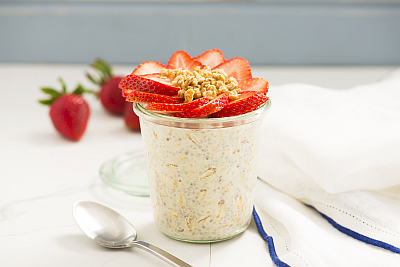
The 101: Berries are nutritional powerhouses. They are a great source of antioxidants and flavonoids, which help our cells repair damage and fight disease and boost memory, which means children may retain more of what they learn. One such nutrient, vitamin C, is especially important for your immune system. What’s more, “the antioxidants from berries are a good after-sport snack because they help your muscles recover from physical activity,” adds Colleen.
But that’s not all, she says. Berries provide a great source of carbohydrates which is our brain’s preferred energy. They’ll be sure to help your scholar power through a long day of studying.
Your Homework Assignment: Soak these Strawberry Overnight Chia Oats, which call for honey, granola and nonfat plan Greek yogurt to take it to the next level.
Why They’ll Love It: Because, as we all know, breakfast is the most important meal of the day. You’ll shave a few minutes off your morning routine with these overnight oats. Experiment with your family’s favorite berries!
FISH
Fish may seem like an unlikely addition to Colleen’s list, but hear her out: Seafood scores an “A” in multiple subjects—and many of us should be eating more of it.
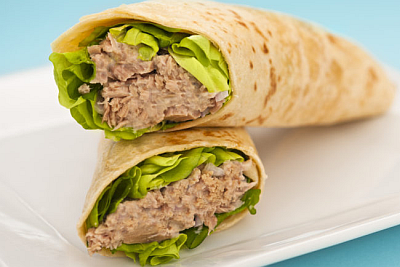
The 101: “Fish like salmon and tuna are rich in vitamin D and omega-3 fatty acids, both of which are important for a child’s developing brain and nervous system,” Colleen explains. “That can lead to better focus and concentration during the school day.”
Fish also helps growing bones, being an excellent form of calcium. And as a great source of protein, fish can help students power through afternoon classes and beyond. That deserves extra credit!
Your Homework Assignment: Reach for this Perfect Tuna Wrap for a quick dinner or weekend lunch.
Why They’ll Love It: Wraps are just plain fun to eat, and tuna’s lean protein will provide long-lasting energy.
WHOLE GRAINS
One secret to back-to-school motivation? Whole grains! Foods like brown rice, oatmeal and whole grain bread provide the nutrients needed to power through a full day of learning.
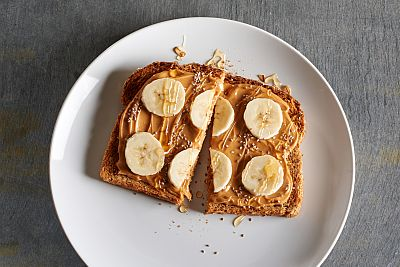
The 101: Whole grains, which are part of the carbohydrate family, contain several B vitamins like thiamin and riboflavin and minerals such as iron and magnesium. These nutrients provide energy and support for your body’s immune and digestive systems.
Before they run out the door in the morning, give them a breakfast with whole grains to keep their hunger at bay! “Because of the high levels of fiber, eating whole grains can help kids feel fuller longer—helping them stay focused on their math lesson instead of the next meal,” says Colleen.
Your Homework Assignment: Get the day started with this Peanut Butter Power Toast.
Why They’ll Love It: Bananas and peanut butter are a classic sweet yet salty combination. With a little honey drizzled on top, this recipe is sure to have your kids asking for more. Give almond or pecan butter a try if your child has a peanut allergy.
There you have it—several nutritious and delicious ideas to start experimenting with! Work these four food groups into your family’s menu to feed their potential in body and mind. Hungry for more healthy, kid-friendly ideas? Check out our favorite snacks to tide them over until dinnertime.
Note: Since everyone’s health history and nutritional needs are so different, please make sure that you talk with your doctor and a registered dietitian to get advice about the diet and exercise plan that‘s right for you.

